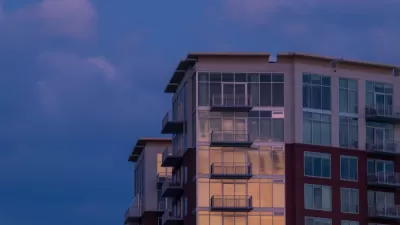Upzonings in working class neighborhoods usually provoke political opposition based on concerns about gentrification and displacement. But the new Wynwood Norte Neighborhood Revitalization District in Miami might have worked for a solution.
"Residents and property owners who banded together in the newly rechristened working-class neighborhood of Wynwood Norte have won Miami commissioners’ enthusiastic approval for an innovative plan that would tame looming gentrification by spurring development," reports Andre Viglucci.
"The Wynwood Norte Neighborhood Revitalization District, a special zoning plan approved on first reading by a 5-0 vote on Thursday, arose from a grassroots effort to reverse the historic residential enclave’s declining fortunes," adds Viglucci.
The NRD-2, as the district is also called, was created by Miami city planners based on earlier work by Wynwood Community Enhancement Association, PlusUrbia Design, and others to create the Wynwood North Community Vision Plan. The Miami City Council recognized the vision plan in November 2019, passing a resolution instructing city staff to study implementation—enter the Wynwood Norte Neighborhood Revitalization District.
The zoning changes included in the revitalization district "would allow Miami-Dade County’s housing agency, which owns several acres of underused land in the neighborhood, to expand its local stock of affordable and workforce housing," explains Viglucci.
To protect the community, "the plan aims to preserve the core and character of the neighborhood by placing stricter limits on demolitions and maintaining a low scale in residential areas," adds Viglucci.
More details on the community-led process that produced the vision plan and the revitalization district, the goals of the vision plan and revitalization district, as well as the history of planning and development in the area are included in the source article.
FULL STORY: To fight gentrification, a working-class Miami enclave wins plan to spur development

Alabama: Trump Terminates Settlements for Black Communities Harmed By Raw Sewage
Trump deemed the landmark civil rights agreement “illegal DEI and environmental justice policy.”

Planetizen Federal Action Tracker
A weekly monitor of how Trump’s orders and actions are impacting planners and planning in America.

The 120 Year Old Tiny Home Villages That Sheltered San Francisco’s Earthquake Refugees
More than a century ago, San Francisco mobilized to house thousands of residents displaced by the 1906 earthquake. Could their strategy offer a model for the present?

LA’s Tree Emergency Goes Beyond Vandalism
After a vandal destroyed dozens of downtown LA trees, Mayor Karen Bass vowed to replace them. Days later, she slashed the city’s tree budget.

Sacramento Leads Nation With Bus-Mounted Bike Lane Enforcement Cameras
The city is the first to use its bus-mounted traffic enforcement system to cite drivers who park or drive in bike lanes.

Seattle Voters Approve Social Housing Referendum
Voters approved a corporate tax to fund the city’s housing authority despite an opposition campaign funded by Amazon and Microsoft.
Urban Design for Planners 1: Software Tools
This six-course series explores essential urban design concepts using open source software and equips planners with the tools they need to participate fully in the urban design process.
Planning for Universal Design
Learn the tools for implementing Universal Design in planning regulations.
Ada County Highway District
Clanton & Associates, Inc.
Jessamine County Fiscal Court
Institute for Housing and Urban Development Studies (IHS)
City of Grandview
Harvard GSD Executive Education
Toledo-Lucas County Plan Commissions
Salt Lake City
NYU Wagner Graduate School of Public Service





























